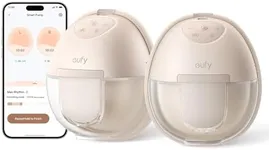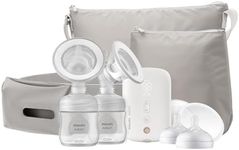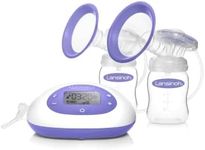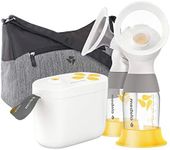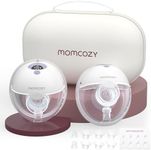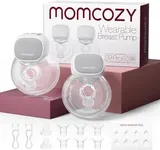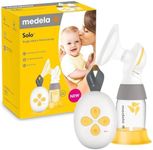Buying Guide for the Best Breast Pumps
Choosing the right breast pump can make a big difference in your breastfeeding journey. The best pump for you depends on your lifestyle, how often you plan to pump, and your comfort preferences. It's important to think about where and when you'll use the pump, how much milk you need to express, and how easy the pump is to clean and carry. Understanding the main features will help you find a pump that fits your needs and makes the process as smooth as possible.Type (Manual vs. Electric)The type of breast pump refers to how the pump operates. Manual pumps require you to squeeze a handle to create suction, while electric pumps use a motor to do the work for you. Manual pumps are usually smaller, quieter, and more affordable, making them a good choice for occasional use or travel. Electric pumps, on the other hand, are faster and more efficient, especially for moms who need to pump frequently or return to work. Double electric pumps can express milk from both breasts at once, saving time. To choose the right type, consider how often you plan to pump and whether you need portability or speed.
Suction Strength and AdjustabilitySuction strength is how powerful the pump is at drawing out milk, and adjustability means you can change the suction level to what feels comfortable. Stronger suction can help express milk faster, but too much can be uncomfortable. Pumps with adjustable suction let you find a setting that works for your body, which is important for comfort and effective milk expression. If you have sensitive breasts or are new to pumping, look for a pump with a wide range of gentle settings. If you need to pump quickly, a pump with higher maximum suction may be helpful.
Portability and SizePortability refers to how easy it is to carry and use the pump on the go. Smaller, lighter pumps are easier to take to work or when traveling, while larger pumps may be better for home use. Some pumps are designed to be discreet and can fit in a bag, while others are bulkier and need to be plugged in. If you plan to pump outside the home or need to move around while pumping, look for a compact, lightweight model, possibly with a battery option.
Ease of CleaningEase of cleaning is about how simple it is to take apart and wash the pump parts. Pumps with fewer pieces and smooth surfaces are easier to clean, which is important for hygiene and convenience. If you want to save time and reduce hassle, look for a pump with minimal parts and dishwasher-safe components. If you don't mind extra cleaning, you might consider pumps with more features or accessories.
Noise LevelNoise level refers to how loud the pump is when in use. Quieter pumps are more discreet and less likely to disturb others, which can be important if you plan to pump at work or during the night. If privacy and quiet are important to you, look for pumps that are specifically designed to operate quietly. If you only plan to pump at home and noise isn't a concern, this may be less important.
Power SourceThe power source is how the pump gets its energy—either from batteries, a wall outlet, or both. Some pumps are battery-operated or rechargeable, making them more portable, while others need to be plugged in. If you need to pump in places without easy access to power, a battery or rechargeable option is best. If you always pump at home, a plug-in model may be fine.
Flange Size OptionsFlange size refers to the part of the pump that fits over your breast. Having the right size is important for comfort and effective milk expression. Some pumps come with multiple flange sizes or offer them separately. If you experience discomfort or poor milk flow, you may need a different size. It's helpful to choose a pump that offers a range of flange sizes to ensure a good fit for your body.
